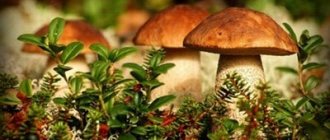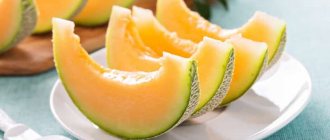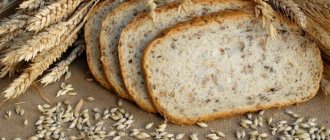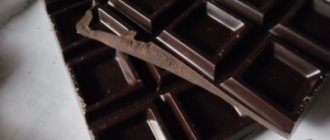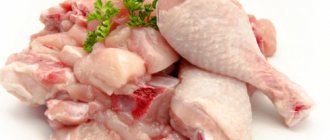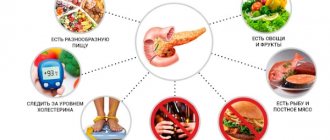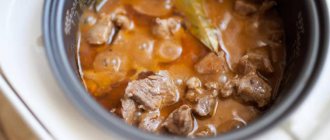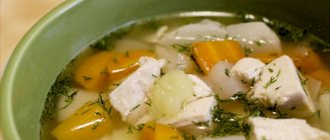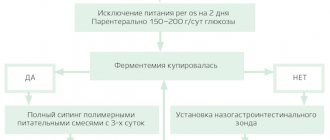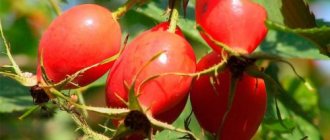Pancreatitis is an inflammation of the pancreas that is chronic in nature with periodic exacerbations. Develops against the background of eating disorders and abuse of bad habits. Like any other disease of the gastric tract, pancreatitis requires the patient to follow certain recommendations regarding diet and nutrition. Drug treatment of the inflammatory process should occur against the background of a constant diet, restrictions on the amount of food consumed, caloric content of dishes and adherence to methods and modes of food preparation. Moreover, the patient must adhere to such a strict regime not only during acute conditions, but also during the remission stage of the disease. Mushrooms are a favorite dish for many. Is it possible to eat them with pancreatitis, how to choose the right one and what to cook with mushrooms so as not to harm your health and get maximum benefits? We will answer these questions in our material.
Is it possible to eat mushrooms with pancreatitis?
There is a lot of debate about whether it is possible to eat mushrooms with pancreatitis? Endocrinologists and nutritionists categorically prohibit eating mushrooms during periods of exacerbation of the disease and during intensive therapeutic treatment. During periods of remission, when the latency of the disease is observed for 2-3 months, mushrooms and dishes made from them are gradually introduced into the patient’s diet.
Mushrooms are a unique plant product, which in terms of protein content, nutrients, essential amino acids is equal to meat. Mushrooms do not contain fats and are low in calories, but due to the quantitative composition of nutrients they lead to rapid saturation, after which the feeling of hunger does not occur for a long time.
This dietary product is part of many therapeutic diets, but in case of inflammation of the pancreas, doctors impose a ban on eating mushrooms. For all their beneficial properties, mushrooms contain large amounts of chitosan.
It is a complex polysaccharide, a natural polymer, whose properties are similar to microcellulose. Its peculiarity is that it is difficult to digest in the gastrointestinal tract and is excreted unchanged, having absorbed toxins, carcinogens and heavy metal salts.
During periods of exacerbation of the disease, mushrooms and dishes made from them are strictly prohibited. When stable remission occurs, during the latent period, mushroom dishes and broths can be introduced into the diet.
Medicinal properties of some mushrooms
Some mushrooms exhibit healing properties by producing antibiotic substances or neutralizing bacteria.
With the help of selected types of mushrooms, they treat malignant tumors (vole, horned grass, russula), get rid of viruses (lentinellus auricularis, lepiota rougha, white pig gentian), infectious diseases (Kele's oak, psatirella Candolla). There are known species containing antioxidants (hydnellum and irpex).
The beautiful chanterelle mushroom contains an abundance of vitamin D-3, trace elements of copper and zinc, thanks to which the chanterelle is used in preventive measures and restoration of the pancreas.
Mushrooms called stitches have healing qualities. Stitch mushrooms exhibit analgesic properties and are used to heal people from pancreatitis and other diseases of the pancreas.
Treatment of the pancreas is carried out with mushrooms: common fungus, larch tinder fungus, reishi tree mushroom.
Treatment of pancreatitis with chanterelle mushrooms
Chanterelle infusion helps with pancreatic diseases. To treat pancreatitis, 1 tablespoon of dried chanterelles is finely ground. Add 200 grams of vodka or alcohol to the resulting powder, pour the resulting mixture into a bottle, and leave it in a dark place to infuse. Insist for ten days. You need to shake the bottle daily. After the infusion is ready, take 1 teaspoon daily in the evening for 3-4 months.
Mushrooms are completely contraindicated during the inflammatory process in the pancreas, at any stage. A small dose of the product, crushed into puree, will cause great harm to health. Mushrooms are allowed to be consumed once every two months, in small quantities, with the simultaneous use of enzyme preparations: pancreatin, festal, mezim.
You will have to carefully monitor how you feel after consuming the product; if it worsens, immediately contact an ambulance. Remember, mushrooms are sometimes fatal and can damage the pancreas, kidneys, liver, and lead to suffocation and cardiac arrest.
Not recommended products
With pancreatitis, the inflamed pancreas stops producing the required amount of enzymes required to digest food. Therefore, there are a number of foods that doctors do not recommend eating for this disease. The following are strictly prohibited:
- fatty meats - pork, lamb, duck;
- liver of any animals and birds - this product contains extractive substances that lead to increased appetite and increase the production of enzymes, loading the pancreas;
- fatty fish - these include herring, salmon, mackerel (the consumption of canned fish is prohibited);
- sausages and smoked meat products;
- spicy dishes or with a lot of spices;
- pickled and salted vegetables;
- eggs - raw yolk is especially dangerous, as it causes increased bile secretion, which is an irritant to the pancreas.
Restrictions for pancreatitis apply to some cereals (barley, millet), drinks (carbonated, strong black tea, coffee, cocoa, hot chocolate). Vegetables can only be consumed boiled, baked without oil or steamed.
The right choice of mushrooms for pancreatitis
Doctors are also ambivalent about eating mushrooms for pancreatitis. With a meager diet, the patient’s body must receive all types of vitamins, minerals and vital substances.
In this case, mushrooms act not as food, but as a storehouse of micro and macroelements. The main thing is to determine which mushrooms are safest for health.
Among mushrooms, there is one species with the lowest content of chitin and essential oils. These are champignons. When choosing mushrooms, it is necessary to take into account that the caps are considered the safest; they have a lower content of heavy metals and chitin. Mushroom stems tend to accumulate harmful substances from the soil and atmosphere, so they should not be eaten if you have pancreatic disease.
The effect of mushrooms on the pancreas
According to nutritionists, mushrooms are difficult food for the pancreas. Chitin, which is not absorbed in the gastrointestinal tract, puts a large burden on the pancreas. This is due to the fact that chitin has a coarse fiber structure, for the digestion of which the pancreas strives to release more gastric enzymes.
With pancreatitis, chitosan contained in mushrooms causes the patient to accumulate gases in the intestines, which leads to severe pain, vomiting, and increased body temperature. Therefore, not only the mushrooms themselves, but also broths based on them are especially dangerous during relapses of the disease.
Diet food and champignons
Mushrooms have a unique property: they are very nutritious, although they have low calorie content and a small percentage of fat (1%). One hundred grams of champignons contain only 1 gram of fat, 0.1 grams of carbohydrates and about 4 grams of protein. Therefore, soups and rolls made from forest products are popular in the diet menu of people losing weight.
In terms of protein composition, mushrooms are closest to nutrients of animal origin. In terms of nutritional value, the unique product is compared to high-quality meat. But for quantitative comparison, only dried ones are suitable.
That is, in order to get the same amount of proteins as can be taken from meat or eggs, you need to use the corresponding weight of dried or white champignons in soups or juliennes.
Mushrooms are interesting for dietary nutrition because they contain a whole collection of useful substances:
- folic and various amino acids;
- magnesium, potassium, iron, sodium, zinc, fluorine, phosphorus, chromium, iodine;
- cellulose;
- vitamins (C, A, PP, as well as B1, 2, 5, 6 and 9).
Chromium, contained in porcini mushrooms and chanterelles, deserves special attention for dietary nutrition. The amount of this element is enough for a person to stop craving for sweets and fatty foods.
Among the beneficial qualities of mushrooms, it is worth noting their ability to fight certain types of bacteria in the body.
Surprisingly, mushrooms also have a special enzyme that serves as a catalyst for the breakdown of fats, proteins and carbohydrates. It is this unusual property that forces modern scientists to look for a non-harmful effect on the pancreas in the plant, and also to develop a cure for pancreatitis based on its powder.
The danger of fungi in pancreatitis
Doctors explain the danger of mushrooms in pancreatitis by their complex chemical composition. The following components of mushrooms can cause harm to a sick body:
- Coarse fiber is a structural component of chitosan.
- Essential oils - the aroma that mushrooms emit are caused by special chemical compounds. Essential oils stimulate appetite and stimulate pancreatic secretion.
- Radionuclides – they accumulate and concentrate in mushrooms. Almost all mushrooms are an absorbent “sponge” for toxic and radioactive substances in the soil and air.
Most often, mushrooms are fried and served with sour cream, which is strictly prohibited in case of pancreatic disease - all fats have a detrimental effect on the inflamed pancreas.
Poisoning with low-quality mushrooms can cause serious consequences; with pancreatitis, the processing functions of the gastrointestinal tract are weakened and poisons are absorbed into the blood in their pure form.
Other hazards
Mushrooms tend to be an absorbent for nature. They absorb toxins from their environment like a sponge, purifying water, air and soil. Therefore, even such harmless hornbeams as champignons or chanterelles can pose a health threat if they grow in areas of environmental pollution. When they enter the body, they release accumulated toxins and cause serious poisoning.
It is dangerous to collect raw materials yourself if you are not sure that the species found is edible. Mushroom poisoning occupies an impressive position in the statistics of gastrointestinal diseases and entails a malfunction of internal organs. First of all, the pancreas. Food or chemical poisoning are some of the most common causes of pancreatitis.
Rules for cooking mushrooms for pancreatitis
Taking into account all the recommendations of doctors, and taking into account the danger that mushrooms can pose, you must follow the rules for preparing mushrooms:
- eat only caps;
- thoroughly clean the caps from the top, leathery layer;
- mushrooms can only be boiled; eating fried, salted or pickled mushrooms is not allowed;
- Cooking time should be at least 1.5 hours.
You need to cook the mushrooms in 2 stages. The first is to place the peeled mushrooms in cold water, bring to a boil and cook for 25-30 minutes. Then drain this water, rinse the mushrooms and place them in boiling water.
Continue cooking for 1 hour.
Conditions under which they can be eaten
So, the compatibility of mushrooms and the pancreas raises a lot of doubts. If you introduce them into the diet, then you need to do this extremely carefully, observing a number of conditions:
- Mushroom dishes are returned to the diet only after several months of stable remission, if the inflammation of the pancreas has not been aggravated by complications and additional pathologies.
- Before the first use, consultation with your doctor is required. If possible, this event should be timed to coincide with the next examination to make sure that there are no background deteriorations in the condition of the pancreas.
- After the first small portion, take a break for at least a week. This is exactly how long it takes to understand whether they have a negative effect or not.
- You can only use mushrooms grown on special closed farms. This eliminates the possibility of harmful substances being absorbed into the product from the external environment.
It is also important to cook mushrooms correctly. Fresh small champignons are thoroughly washed and skinned. Cook for at least an hour. Grind in a blender and add to mashed potato soup.
Porcini mushrooms, boletus and chanterelles are best used dried. They are ground in a coffee grinder to a powder, boiled into liquid porridge and added to vegetable puree soup.
Delicious recipes
Champignon julienne with cheese crust
This delicious dish can be prepared for a festive table. Julienne is served in individual cocotte makers. To prepare 4 servings you will need:
- champignon caps – 400 gr.;
- cream (low-fat) 120 ml;
- white onion – 1 turnip;
- hard cheese – 100 gr.
You need to prepare the onions and champignons - chop them into small slices and cubes. The mushrooms are boiled separately until fully cooked. Sauté the onion in a frying pan until golden brown, then pour in the cream, stirring. Boiled champignons are combined with sauce and placed in molds (cocotte makers).
Sprinkle each serving with grated cheese. Place the cocotte makers on a baking sheet and place in the oven to bake for 5 minutes until the cheese melts.
Serve the julienne hot, sprinkled with chopped dill.
Mushroom bits (oven recipe)
A dietary dish of champignons, prepared with a minimum amount of oil. To prepare 4-5 servings you will need:
- champignons – 600-700 gr.;
- rice (dry) – 200 gr.;
- onion – 1 medium onion;
- garlic – 2-3 cloves;
- egg – 1 pc.;
- hard cheese – 100 gr.;
- ground pine nuts or walnuts – 2 tbsp. spoons;
- wheat flour (for dredging) – 2-3 tablespoons;
- vegetable oil – 1-2 tablespoons;
- greens (dill, basil) - 2-3 sprigs;
- table wine – 150 ml;
- mushroom broth – 350 ml;
- salt, pepper to taste.
Boil the mushrooms until tender, drain the broth.
Finely chop the champignons and onions. In a frying pan or in a saucepan with a thick bottom, sauté the onion until soft, then add rice, nuts, pour in the wine and broth, and simmer until the rice is ready. Stir finely chopped champignons, chopped herbs into the prepared cooled mass, beat in an egg, add crushed garlic, salt and pepper. Mix the mixture thoroughly and form it into balls. They need to be breaded in flour. Line a baking tray with paper or a baking mat.
Place the meatballs and place in the oven. Bake for 20 minutes at 170-180°C.
The purpose of the diet for pancreatitis
The main goal of the diet is to restore the functions of the pancreas. Nutrition during the period of exacerbation of pathology should help relieve pain. In the first 1-2 days, food is completely excluded, the method of therapeutic fasting is used, and you are allowed to drink water and green tea.
When the acute period has passed, a diet based on “Table No. 5” is used. This diet helps relieve inflammation of the pancreatic duct. Along with drug treatment, dietary nutrition helps relieve swelling of the gland.
Diet in the acute stage of the process
During the period of exacerbation and in crisis moments of the disease, therapeutic fasting for several days is recommended. The patient takes antispasmodics and painkillers, so he is allowed to drink water, vegetable broths, and alkaline mineral waters.
After the acute phase has passed, you can carefully introduce well-cooked porridges from soft types of cereals (rice, semolina, oatmeal), and cereal-based jelly into the diet. Meals should be at least 5-6 times a day. Such fractional meals do not burden the gastrointestinal tract and do not cause increased secretion of enzymes.
Eating mushrooms in the acute stage is strictly prohibited.
Tea mushroom
Kombucha is considered one of the best folk remedies. It improves gastric motility and is a natural choleretic agent. It is used both in the treatment of chronic inflammation of the pancreas (after complete elimination of acute symptoms) and for the prevention of pancreatitis.
They begin to take the drink in the remission stage. The first dose should not exceed 100 ml. After a week, increase the portion to 200-250 ml. The optimal time for taking is between lunch and dinner, separately from meals. It is not advisable to take kombucha on an empty stomach or close to bedtime.
Warning! Kombucha contains sugary substances and is not recommended for diabetes. In any case, you should use this or that remedy only after consulting your doctor.
Nutrition outside the acute stage
When stable remission has occurred and the latent period has been observed for more than 2-3 months, you can introduce lean meat, soups and other favorite dishes into the diet. It is important to remember that if you have pancreatitis, you should always follow portion sizes. It should be no more than 100-150 g. for one meal.
Fractional meals should be observed throughout the entire period of illness. Liquids should also be drunk in small portions.
Mushrooms for pancreatitis in the stage of stable remission can be introduced into the diet only after consulting with your doctor. You need to start with champignon broths, cooked according to the rules. To begin with, you should eat mushroom dishes no more than 1-2 times a month, with a break of 10-15 days. This period is needed to monitor the state of health, whether an exacerbation of the disease will occur.
If the body accepts champignon broth well, then you can switch to light puree soups and dietary mushroom dishes.
Remission of pancreatitis
What can you eat if you have pancreatitis?
Persistent remission of chronic pancreatitis implies a latent period of the disease of about one year. Provided you feel well, some allowances are allowed in the diet.
Raw vegetables high in fiber, sweet fruits, and baked goods are allowed in the diet to a limited extent. Borscht, beetroot soup, and mushroom soup are allowed. Champignons are considered the least dangerous for a weakened pancreas.
This type of mushroom is grown artificially, without the use of toxic additives. When purchasing champignons in a supermarket, you can be sure of their quality. When preparing and consuming champignons, you must follow certain rules that will help avoid adverse consequences. First, rinse the product thoroughly and clean the caps. For healthy people, this may not be necessary; for patients with pancreatitis, the absence of skin on the cap will make it easier to digest the product.
Secondly, remove the legs, since chitin mainly accumulates in them. Thirdly, champignons can only be boiled (not fried or baked). Cooking time is one and a half hours. Half an hour after boiling, the first broth must be drained. Champignons should be introduced into the diet gradually, focusing on your well-being. The optimal dish would be puree soup.
Diet soup recipe
A light soup for the diet table is prepared on the basis of low-fat cream and champignons. To prepare 2 servings of soup, you should take the following set of products:
- champignon caps (washed, peeled) – 500 gr.;
- low-fat cream, no more than 10% – 300 ml;
- medium-sized potatoes - 2 pcs.;
- onions (preferably red) – 2 pcs.;
- bay leaf – 1 pc.;
- wheat flour – 3 tbsp. spoons;
- salt, pepper, herbs - to taste.
Finely chop the champignon caps, then pour in 1 liter of water and cook for 30 minutes over low heat. Then you need to drain the water and rinse the mushrooms. Place the washed mushrooms into the pan, add 600 ml of hot boiled water, and continue cooking for 45-60 minutes. 15 minutes before the end of cooking, add diced potatoes and chopped onions to the boiling mushroom broth.
1-2 minutes before the vegetables are ready, you can add a bay leaf.
After the vegetables are ready, you need to remove the bay leaf, drain the vegetable broth, straining it through a fine sieve. In a frying pan, without adding oil, heat the flour. Pour cream into it in a thin stream, constantly stirring the resulting mass. To dilute the sauce, add a little mushroom broth.
Strained vegetables with champignons should be punched with a blender until smooth. Then mix the vegetable and mushroom puree with the sauce and continue blending with a blender, adding broth. Before serving, the soup is heated on the stove, salt and pepper are added to it. You can put white bread croutons and a little chopped herbs in a plate of puree soup.
